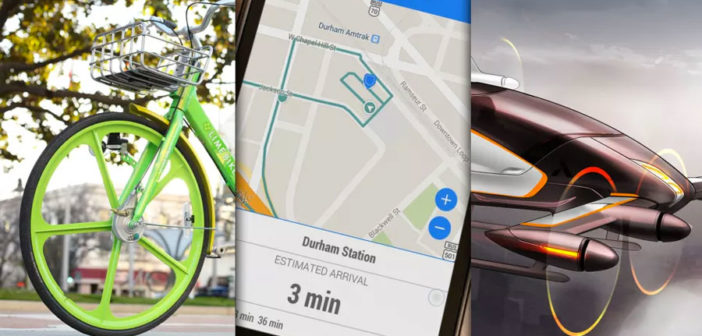Flying cars. Dockless bikes. Cars that watch you. We spoke with eight venture capitalists on the transportation technologies they’re betting on and why.
The way we move through the world is undergoing a deep tectonic shift. Ride-sharing services like Uber and Lyft have come to dominate a new market, where people pay for miles instead of buying vehicles, and the same model is now, controversially, being applied to scooters. Cars can actually drive themselves, under certain conditions. But what will this mean for the future of how we commute?
Co.Design spoke to eight venture capitalists from firms like Andreessen Horowitz and Google Ventures as well as smaller, transportation-focused funds to learn what version of the future they’re betting on and how they think people will move around cities and the world in the coming years. They might be sitting in shiny Silicon Valley offices, but these are the people deciding where the money goes. Where they invest–or don’t–could transform your commute.
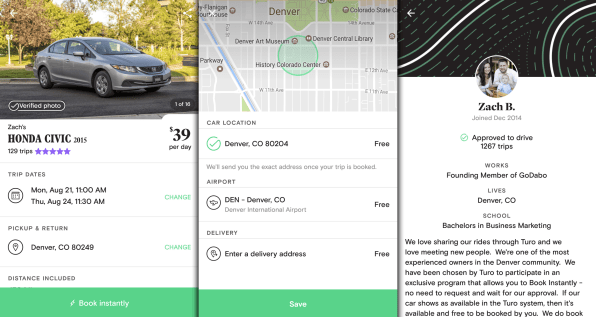
RIDESHARING ON OVERDRIVE
Ridesharing is here to stay–emphasis on sharing. Investor Rob Coneybeer, the managing director of Shasta Ventures, points out that even though ridesharing has grown in popularity in the United States and beyond, many vehicles on the road remain underused. “When you look at some of the more mature Uber and Lyft markets, the percentage of their rides that are pool rides are very large,” he says.
Coneybeer believes that using smaller vehicles to carry passengers from one location to a final destination–often called the “last mile” problem–can be more efficient than a bus that follows a set route at all hours of the day.
Will it replace public transit? In some places, it might. Uber’s CEO Dara Khosrowshahi recently announced he wants “to run the bus systems for a city”; in Altamonte Springs, Florida, the local government has done away with public transit altogether in favor of subsidized Uber rides. London-based transit company Citymapper launched a bus-like service earlier this year. Cities, though, are fighting back by adding increased surcharges to every ride, which will go toward funding public transit.

CARS WILL WATCH US
Much of the hype in transportation in the past few years has focused on self-driving cars. There are dozens of companies trying to make fully autonomous vehicles, as well as the sensors and software that will make those cars run. But before self-driving cars flood the streets, there’s a transitional period heading our way in semi-autonomous cars. These are cars that sometimes drive themselves and sometimes let you play pilot. They key is that they will need to know when to take control of the wheel. To do that, they’ll need cameras and sensors inside the car to monitor you, the driver.
This is already starting to happen. In 2018, Audi is set to release a new semi-autonomous car that will be able to completely take over steering during traffic jams–one of the most annoying times to be at the wheel. But to successfully transition between the car driving itself back to human driving, the car has to be alert to precisely when the driver is ready to take over again. To do this, the car is outfitted with a camera that faces the driver and can detect the angle of the driver’s head and if her eyes are open. If you don’t appear to be ready to take over driving again after many alerts over the course of 10 seconds, the car will stop itself and turn on its hazards.
But such vehicles may face consumer resistance. “That’s difficult to do in automobiles because there’s this belief that vehicles should not have any kind of internal driver facing sensors. It’s been displayed as this bastion of freedom,” says Reilly Brennan, the founder and general partner of the transportation VC firm Trucks.”I think of it more as a handshake.” If you want the conveniences of the technology, you agree to be watched so that the system can understand enough about you and respond accordingly.

CARS WILL NO LONGER BE PRIVATE
Tech companies already gather obscene amounts of data about our activity online. But as cars become smarter, transportation companies will similarly gather data, much of it from the sensors and cameras necessary to make semi-autonomous and fully self-driving cars work.
Why should commuters care? Companies collecting the data will likely sell it. So far from being a private space that takes you from point A to B, cars will be another surveilled space. If your gaze lingers on a billboard, prepare for an onslaught of ads from that company. If you make a reckless move, prepare for your insurance premium to rise.
It’s not happening yet, according to Olaf Sakkers of Israel-based Maniv Mobility, and for a temporary reason: Automakers don’t yet understand what to do with the data they are collecting. “Those car makers know that the data is valuable,” he says. “Compare them to Smeagol or Gollum. They hold on to it and they stroke it. They’ve uploaded their precious to Amazon Web Services. But they don’t know how to make money off it, so they’re losing money on it.”
Companies are springing up based purely on how to use the torrents of data–which will only increase as cars begin to collect more and more information. One example is a startup called Otonomo, which is creating a marketplace for car data, primarily for insurance companies. When cars are watching you, carmakers will likely have the chance to sell your behavior to insurance companies. The data from connected, autonomous vehicles will fuel an entirely new way of tracking and measuring risk, making a new type of marketplace in the process–and spelling the end of privacy in the car.
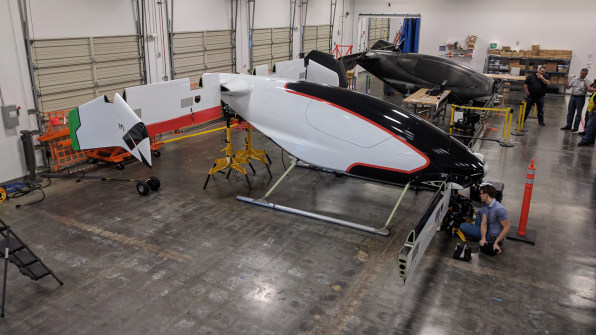
FLYING CARS AREN’T SO FAR AWAY
It’s true. Uber plans to deploy flying taxis in Dubai and Dallas, Texas, by 2020. And Joe Kraus, general partner at Google Ventures, says that flying cars are a lot closer than people believe–even if society might not be ready for them yet.
Right now, the closest technology we have is helicopters–which, crucially, don’t require a runway to lift into the air, and let you fly right over traffic. But helicopters are too expensive for an everyday commute (unless you’re a billionaire), not to mention that the aircraft are complex to fly and create a tremendous amount of noise pollution.
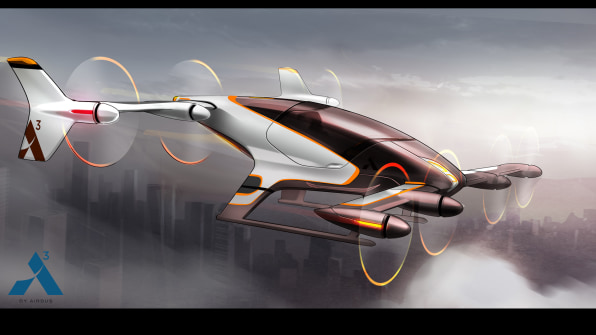
But new technologies are starting to catch up. “I think the idea that we’re flying around in Jetsons-type vehicles sounds crazy to most people and yet we’re getting the point where the combination of battery density, electrification of these vehicles, and the noise profile is going to make it so it’s actually possible,” Kraus says. “Will consumers accept them? It might take a while. Psychologically I think people are scared to fly.”But eventually, he believes, practicality will win out. He estimates that we’re five years away from the Federal Aviation Administration certifying vehicles from startups like Volocopter or Kitty Hawk.
“It’s going to happen,” he says. “Then I think there’s all sorts of opportunity around that. It’s very analogous to self-driving cars.”
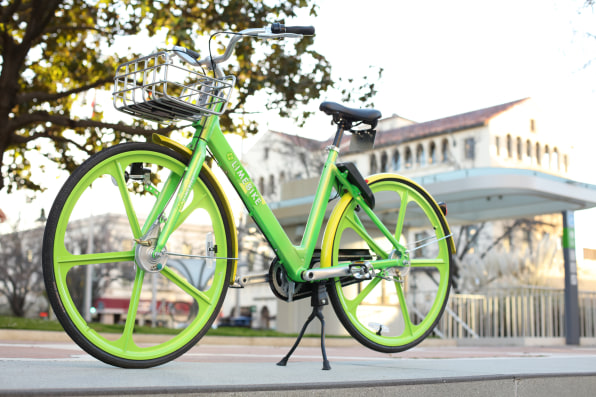
BIKING (AND TAKING SCOOTERS) TO WORK WILL NEVER BE EASIER
While some investors are betting on a future of flying cars, others are staying closer to Earth.
Jeff Jordan, a partner at Andreessen Horowitz, sees more dockless urban mobility solutions on the horizon. Docked bike-share programs, like the Citi Bike program in New York, have had some significant problems, including that they require heavy financial subsidies to be sustainable and they exclude riders who aren’t near docks. Dockless bikes (and scooters), however, solve that last-mile problem, because you can park the bikes anywhere (much to the chagrin of many city officials and residents). The business model can also be more sustainable because you don’t have to build infrastructure for docking stations.
The U.S.-based startup Limebike, which also has a dockless scooter program, is one of many U.S. startups trying to bring the trend to the United States. Of course, dockless biking still has plenty of problems: What do you do when millions of people are trying to park their bikes on the street? Dockless biking companies are also finding that people are just stealing and vandalizing bikes.
Still, Jordan believes there is demand for a service that takes you the last mile or even replaces your entire commute. And it doesn’t necessarily have to be driverless or airborne. The future of transportation won’t depend entirely on autonomous vehicles or their flying brethren. Even some of the oldest ways of getting around–like biking–are still ripe for disruption and have the potential to shake up the future of transportation just as much as a LIDAR-laden supercar.
–
This article first appeared in www.fastcompany.com
Seeking to build and grow your brand using the force of consumer insight, strategic foresight, creative disruption and technology prowess? Talk to us at +9714 3867728 or mail: info@groupisd.com or visit www.groupisd.com

